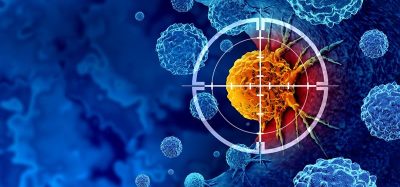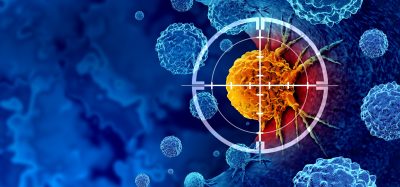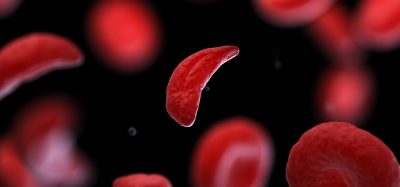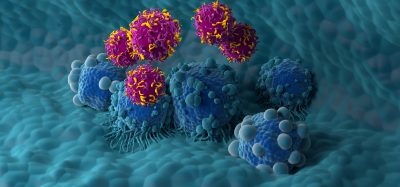Key psychiatric drug target comes into focus
Posted: 20 October 2017 | Dr Zara Kassam (Drug Target Review) | No comments yet
Researchers have reported a major step forward towards designing more powerful psychiatric drugs with fewer side effects…
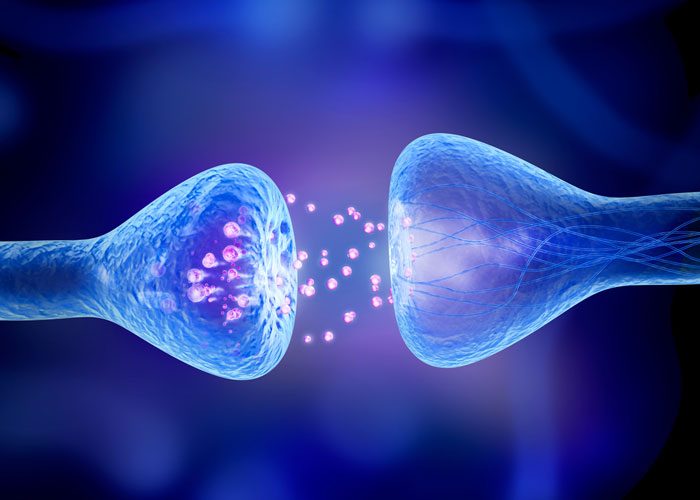

Researchers have reported a major step forward towards designing more powerful psychiatric drugs with fewer side effects.
The team at UC San Francisco, the University of North Carolina-Chapel Hill, and Stanford University have determined the crystal structure of a specific dopamine receptor called D4 at an incredibly high resolution – the highest for any dopamine, serotonin, or epinephrine receptor to date – allowing them to design a new compound that tightly binds only to D4 and none of the other 320 receptors they tested.
Seeing these details allowed us to create a compound that tightly binds only to one kind of receptor
Earlier this year, the same team solved the crystal structure of LSD bound to a serotonin receptor to learn why acid trips last so long and how to perhaps tweak the drug to be less potent.
“We now have the ability to get a crystal-clear image of these receptors to see details like never before,” said co-senior author Dr Bryan L. Roth, the Michael Hooker Distinguished Professor of Protein Therapeutics and Translational Proteomics at the UNC School of Medicine. “That’s the key. Seeing these details allowed us to create a compound that tightly binds only to one kind of receptor. Our ultimate goal is to avoid so-called ‘scattershot drugs’ that hit many unwanted receptors and cause serious and potentially fatal side effects.”
Dr Brian Shoichet, co-senior author and professor of pharmaceutical chemistry in UCSF’s School of Pharmacy, said, “Our computational modelling capabilities allowed us to virtually screen over 600,000 compounds much faster than traditional screening methods and create a hierarchy of compounds that potentially bind only to the D4 dopamine receptor. Our work to create better drugs is far from over, but the computer-based screening tools used here are becoming an ever-more reliable tool in our arsenal.”
We had to get a high-resolution structure like this so we could see exactly how a compound can bind to D4
To solve the high-resolution structure of D4, researchers Dr Sheng Wang, and Dr Daniel Wacker conducted a series of intense experiments over three years to get the D4 receptor to crystallise. They dissolved receptor molecules in water-based buffers and then slowly removed the water.
Then, in order to be sure the receptors were sitting perfectly still so they could be imaged, Dr Wang and Dr Wacker employed a variety of experimental tricks to carefully draw out water at the exact right conditions until the receptors were packed tightly into crystals that could then be bombarded with x-rays. The result was the first-ever super high-resolution image of the chemical architecture of D4 bound to the antipsychotic drug nemonapride.
“We had to get a high-resolution structure like this so we could see exactly how a compound can bind to D4,” said Dr Wang. “It’s like seeing details in a photograph that you just couldn’t see unless the photo was a super high resolution. Once we had that, we teamed up with our UCSF colleagues to computationally screen for compounds that might potentially bind to this receptor but not others.”
Dr Anat Levit, a postdoc in Shoichet’s lab at UCSF and the third co-first author, led the computational modelling and new compound discovery, in collaboration with co-author Dr Ron Dror, and his Stanford lab.
“Theoretically, there’s an almost infinite number of chemical compounds that could be made, and this chemical space is enormous and largely unexplored. However, we have large libraries of virtual compounds that at least edge into this space,” said Dr Levit. “Using the new high-resolution structure and our computational modelling program, we fit each of 600,000 virtual compounds into the dopamine/nemonapride binding site of the D4 receptor, as you might fit candidate puzzle pieces into a partially constructed puzzle.”
A compound needs to stay attached for a period of time to have an effect inside the cell
Dr Levit and colleagues in the Shoichet lab evaluated all 600,000 of these chemical “puzzle pieces” to see how well they fit into the full D4 receptor that the Roth lab team had solved. Once they had identified the top ten candidate compounds that computer modelling pointed to as likely binding partners with the D4 receptor, they sent them back to Dr Wang and Dr Wacker to test experimentally in the lab.
The Roth lab team found that two of the compounds indeed fit into the D4 receptor, but did so relatively loosely.
“The initial two compounds were just starting points,” said Dr Wacker. “A drug or even a ‘probe’ used to explore the biology of the receptor must fit the receptor tightly. A compound needs to stay attached for a period of time to have an effect inside the cell.”
The research then bounced back and forth between the computer modellers at UCSF and the experimental lab at UNC-Chapel Hill to design and test dozens of new chemical compounds that might bind tighter to the D4 receptor.
Finally, by tinkering with chemical links and ionic attractions here, adding new chemical groups there, Dr Levit identified a virtual compound — compound UCSF924 — that computer simulations suggested could bind extremely tightly to the D4 receptor. Upon testing this compound in the lab, Wang confirmed the molecule could bind to the D4 receptor 1000-times more powerfully than the initial virtual compounds.
D4-specific compound will help researchers understand, and one day drug, specific dopamine receptors
The researchers now plan to test their new compound in animal models to determine exactly how it activates the D4 receptor, and how activating the D4 receptor alone alters brain function.
“No one knows what the D4 receptor precisely does,” said Dr Wang. “The high specificity and high potency of this new compound will allow us to begin to address this for the first time.”
The team also plans to use the highly-selective UCSF924 compound to learn more details of how existing drugs work by altering specific cellular pathways inside cells.
“This work has implications beyond D4,” said Dr Wacker. “For instance, antipsychotics are dirty drugs; they hit everything. To better understand them and improve upon them, we need to understand what they do at every single target they hit. Our work is an important step toward that goal.”
Related topics
Drug Discovery Processes, Drug Targets
Related conditions
Psychosis
Related organisations
Stanford University, UC San Francisco, University of North Carolina-Chapel Hill
Related people
Dr Brian Shoichet, Dr Bryan L. Roth, Dr Daniel Wacker, Dr Ron Dror, Dr Sheng Wang



